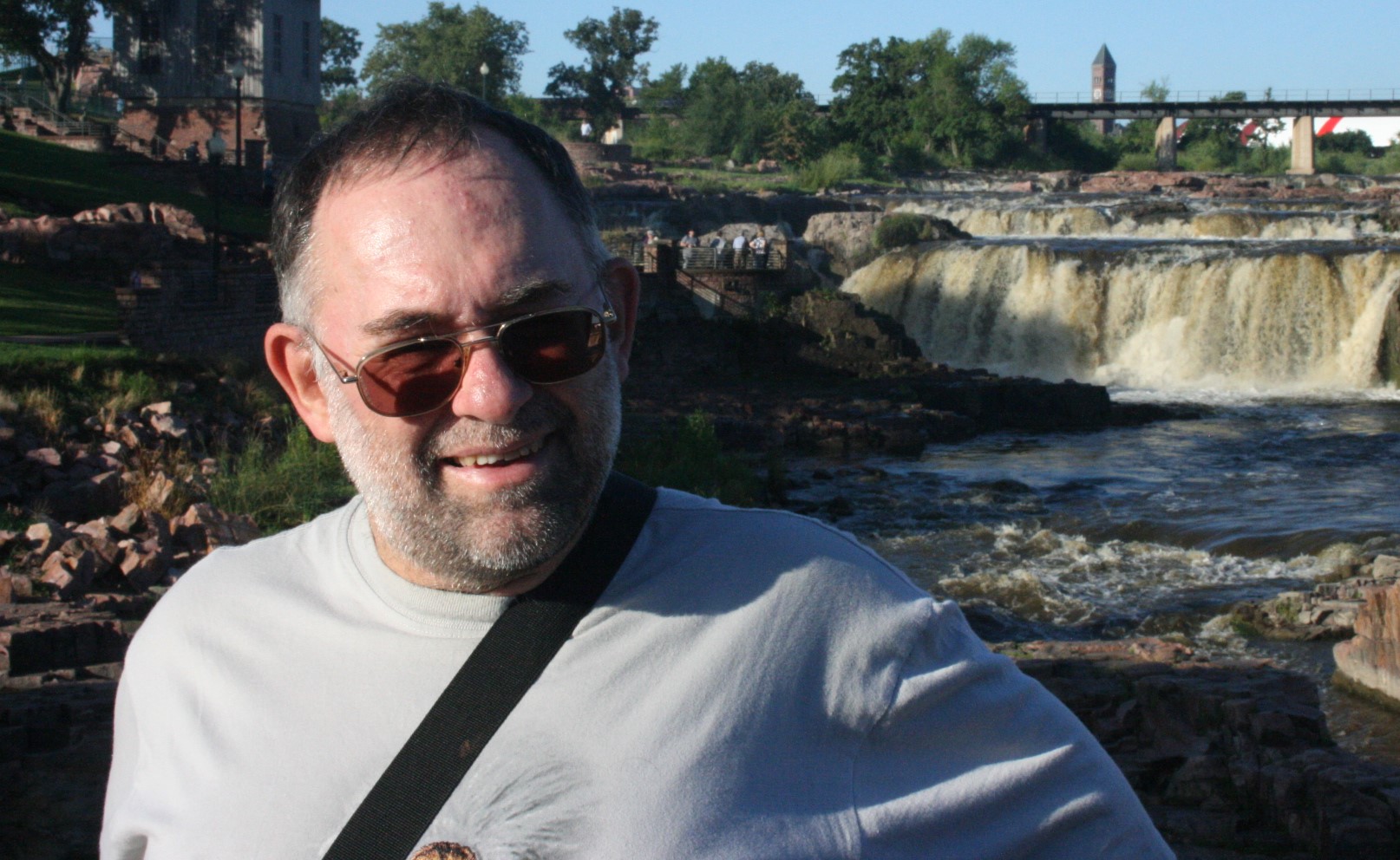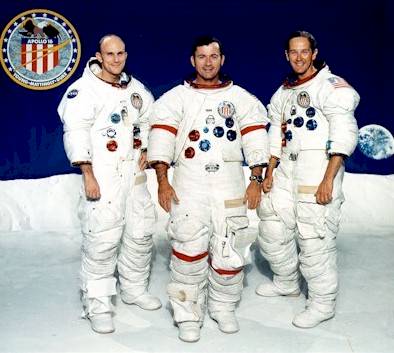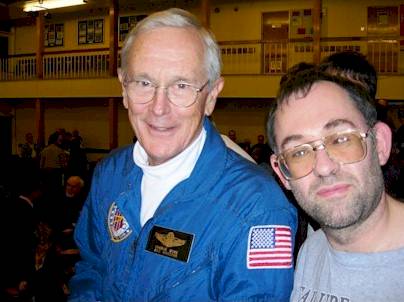
About the Author

Neil M. Haggath
B.Sc.(Hons.) FRAS
 The purpose of this page is simply to give the reader some idea of who I am, and what credentials I have, which enable me to talk about the subjects which are dealt with on this site.
The purpose of this page is simply to give the reader some idea of who I am, and what credentials I have, which enable me to talk about the subjects which are dealt with on this site.
 I graduated from the University of Leeds, England, in 1983, with an honours degree in Physics with Astrophysics. Though much of this site will deal with astronomy- and space-related subjects, I'm not a professional astronomer; I'm a software engineer by profession.
I graduated from the University of Leeds, England, in 1983, with an honours degree in Physics with Astrophysics. Though much of this site will deal with astronomy- and space-related subjects, I'm not a professional astronomer; I'm a software engineer by profession.
 I do, however, have a lifelong interest in astronomy and spaceflight. I was born in 1961, just a few months after Yuri Gagarin's flight, so it's fair to say that I grew up with the Space Age, in the exciting times of the early Space Race and the Apollo programme. The resultant fascination with spaceflight has never left me.
I do, however, have a lifelong interest in astronomy and spaceflight. I was born in 1961, just a few months after Yuri Gagarin's flight, so it's fair to say that I grew up with the Space Age, in the exciting times of the early Space Race and the Apollo programme. The resultant fascination with spaceflight has never left me.
 I've been an amateur astronomer since as early an age as I can remember. I've been a member of Cleveland and Darlington Astronomical Society since 1981, and served on its committee since 1989. I've organised five major astronomical conventions, and frequently give talks to astronomical societies around the UK. I'm very proud to be a Fellow of the Royal Astronomical Society, having been elected to that honour in 1993.
I've been an amateur astronomer since as early an age as I can remember. I've been a member of Cleveland and Darlington Astronomical Society since 1981, and served on its committee since 1989. I've organised five major astronomical conventions, and frequently give talks to astronomical societies around the UK. I'm very proud to be a Fellow of the Royal Astronomical Society, having been elected to that honour in 1993.
 My other hobbies and interests are too numerous to mention here. I'm well-travelled, having visited over 40 countries on six continents. My travels include seven expeditions to observe total solar eclipses - five of them successful, in Bulgaria, Turkey, Australia and two in the USA - and one to observe the 2004 transit of Venus. In 2012, however, I set an unenviable record among British astronomers, for the greatest distance travelled - about 6000 miles - to not see the transit of Venus! I was caught in a typhoon in Thailand; I saw precisely nothing, and got very wet!
My other hobbies and interests are too numerous to mention here. I'm well-travelled, having visited over 40 countries on six continents. My travels include seven expeditions to observe total solar eclipses - five of them successful, in Bulgaria, Turkey, Australia and two in the USA - and one to observe the 2004 transit of Venus. In 2012, however, I set an unenviable record among British astronomers, for the greatest distance travelled - about 6000 miles - to not see the transit of Venus! I was caught in a typhoon in Thailand; I saw precisely nothing, and got very wet!
 Here's me in a suitably astronomy-related setting - on the rim of the famous Meteor Crater in Arizona.
Here's me in a suitably astronomy-related setting - on the rim of the famous Meteor Crater in Arizona.
 I'm also now a published author, of both fact and fiction. I've written and self-published a science fiction novel, Moonsafe Red, which has received very good reviews. And since 2017, I'm proud to be an annual contributor to the highly respected Yearbook of Astronomy, which has been published since 1962, and was edited for 47 years by the late Sir Patrick Moore.
I'm also now a published author, of both fact and fiction. I've written and self-published a science fiction novel, Moonsafe Red, which has received very good reviews. And since 2017, I'm proud to be an annual contributor to the highly respected Yearbook of Astronomy, which has been published since 1962, and was edited for 47 years by the late Sir Patrick Moore.
 Above all, I consider myself a rationalist and a logical thinker. I never cease to be amazed and dismayed by the incredible numbers of supposedly sane and educated people, in today's society, who waste their lives by subscribing to all kinds of irrational beliefs, and pollute the world's media with torrents of meaningless gibberish. These beliefs include ludicrous, paranoid conspiracy theories which defy all common sense, and completely unfounded superstitions, such as astrology, which have absolutely no place in the Twenty-first Century.
Above all, I consider myself a rationalist and a logical thinker. I never cease to be amazed and dismayed by the incredible numbers of supposedly sane and educated people, in today's society, who waste their lives by subscribing to all kinds of irrational beliefs, and pollute the world's media with torrents of meaningless gibberish. These beliefs include ludicrous, paranoid conspiracy theories which defy all common sense, and completely unfounded superstitions, such as astrology, which have absolutely no place in the Twenty-first Century.
 This site is my modest attempt to combat this trend, and to restore a little sanity to the world!
This site is my modest attempt to combat this trend, and to restore a little sanity to the world!
Proud Moments
 On 18 November 2005, I experienced one of the Great Moments of my life. I had the great honour and privilege of meeting one of the astronauts who walked on the Moon - namely Charlie Duke, who came to the UK to give a public talk.
On 18 November 2005, I experienced one of the Great Moments of my life. I had the great honour and privilege of meeting one of the astronauts who walked on the Moon - namely Charlie Duke, who came to the UK to give a public talk.
 In April 1972, Lt-Col. Charles M. Duke Jr., USAF, as he then was, flew as Lunar Module Pilot on the Apollo 16 mission. He and his Commander, John Young, spent three days on the lunar surface, and performed three EVAs. At a time when public interest in Apollo was waning, Charlie kept TV audiences captivated, with his infectious humour and boundless enthusiasm.
In April 1972, Lt-Col. Charles M. Duke Jr., USAF, as he then was, flew as Lunar Module Pilot on the Apollo 16 mission. He and his Commander, John Young, spent three days on the lunar surface, and performed three EVAs. At a time when public interest in Apollo was waning, Charlie kept TV audiences captivated, with his infectious humour and boundless enthusiasm.
 He's on the right in the crew photo below.
He's on the right in the crew photo below.

 Prior to his flight, Charlie served as a Capcom ( Capsule Communicator ) in Mission Control during the Apollo 10 and 11 missions. ( On each shift in Mission Control, the Capcom was the one person through whom all communications with the spacecraft crew were conducted; this job was always done by serving astronauts. ) At the request of Neil Armstrong, he was the person talking to Armstrong and Buzz Aldrin as they made their historic landing.
Prior to his flight, Charlie served as a Capcom ( Capsule Communicator ) in Mission Control during the Apollo 10 and 11 missions. ( On each shift in Mission Control, the Capcom was the one person through whom all communications with the spacecraft crew were conducted; this job was always done by serving astronauts. ) At the request of Neil Armstrong, he was the person talking to Armstrong and Buzz Aldrin as they made their historic landing.
 Then aged 70, Charlie still talked about his experience with the same enthusiasm and humour that he displayed on the Moon 33 years before.
Then aged 70, Charlie still talked about his experience with the same enthusiasm and humour that he displayed on the Moon 33 years before.
 And here's me with the man himself.
And here's me with the man himself.

 Two years later, on 11 October 2007, I was equally privileged to meet my second Apollo astronaut Captain Alan Bean, USN ( Retd. ), aged 75. Alan also walked on the Moon, as Lunar Module Pilot of Apollo 12 in November 1969; he later commanded the second crew of the Skylab space station in 1973.
Two years later, on 11 October 2007, I was equally privileged to meet my second Apollo astronaut Captain Alan Bean, USN ( Retd. ), aged 75. Alan also walked on the Moon, as Lunar Module Pilot of Apollo 12 in November 1969; he later commanded the second crew of the Skylab space station in 1973.
 On 10 October 2008, I met one of the astronauts who didn't get to land on the Moon - namely Fred Haise, aged 75, who was Lunar Module Pilot on the ill-fated Apollo 13 mission in April 1970. The crew's survival and successful return to Earth has rightly been described as NASA's Finest Hour.
On 10 October 2008, I met one of the astronauts who didn't get to land on the Moon - namely Fred Haise, aged 75, who was Lunar Module Pilot on the ill-fated Apollo 13 mission in April 1970. The crew's survival and successful return to Earth has rightly been described as NASA's Finest Hour.
 On 1 April 2011, I met my fourth Apollo astronaut, and my first who flew before Apollo - Captain Richard Gordon, USN ( Retd. ), aged 81. Dick flew with Alan Bean on Apollo 12, as Command Module Pilot - the man who stayed in orbit while his two colleagues landed on the Moon. Before that, he had flown on Gemini 11 in 1966 - one of the series of missions which developed the techniques to make Apollo possible.
On 1 April 2011, I met my fourth Apollo astronaut, and my first who flew before Apollo - Captain Richard Gordon, USN ( Retd. ), aged 81. Dick flew with Alan Bean on Apollo 12, as Command Module Pilot - the man who stayed in orbit while his two colleagues landed on the Moon. Before that, he had flown on Gemini 11 in 1966 - one of the series of missions which developed the techniques to make Apollo possible.
 On 12 April 2014, I met my fifth - Rear-Admiral Thomas K. "Ken" Mattingly, USN ( Retd. ), aged 78. Ken flew as Command Module Pilot on Apollo 16, a crewmate of Charlie Duke. Two years earlier, he was the man who didn t fly on Apollo 13, for those familiar with the story. He later commanded two space shuttle missions in 1982 and 1985.
On 12 April 2014, I met my fifth - Rear-Admiral Thomas K. "Ken" Mattingly, USN ( Retd. ), aged 78. Ken flew as Command Module Pilot on Apollo 16, a crewmate of Charlie Duke. Two years earlier, he was the man who didn t fly on Apollo 13, for those familiar with the story. He later commanded two space shuttle missions in 1982 and 1985.
 On 31 October 2015, I met a man who could rightly be described as "astronaut royalty" - Captain James A. Lovell USN ( Retd. ), at the grand old age of 87. Jim flew in space four times, and is one of only three men who went to the Moon twice - though he didn't get to land on it! He flew on Gemini 7 and 12 in 1965 and 1966, the latter as Commander. Then he flew on Apollo 8 in December 1968, the first manned mission to orbit the Moon - becoming one of the first three men to see its far side with their own eyes. Finally, of course, he commanded the heroic crew of Apollo 13 in April 1970. I have rarely, if ever, seen and heard such an ovation as was given to this man!
On 31 October 2015, I met a man who could rightly be described as "astronaut royalty" - Captain James A. Lovell USN ( Retd. ), at the grand old age of 87. Jim flew in space four times, and is one of only three men who went to the Moon twice - though he didn't get to land on it! He flew on Gemini 7 and 12 in 1965 and 1966, the latter as Commander. Then he flew on Apollo 8 in December 1968, the first manned mission to orbit the Moon - becoming one of the first three men to see its far side with their own eyes. Finally, of course, he commanded the heroic crew of Apollo 13 in April 1970. I have rarely, if ever, seen and heard such an ovation as was given to this man!
 My seventh astronaut followed on 9 April 2016 - Lieutenant-General Thomas P. Stafford USAF ( Retd. ), aged 85. Tom also flew in space four times. He flew on Gemini 6 and 9 in 1965 and 1966, the latter as Commander. Then he commanded Apollo 10 in May 1969, the final "workup" mission, which did everything but land on the Moon; he and Gene Cernan took the Lunar Module down to within ten miles of its surface, and survived something of an emergency when it went into a spin. Finally, in 1975, he commanded the American half of the Apollo-Soyuz Test Project, the first experimental docking of an American and a Soviet spacecraft. Physically, Tom may now be a frail old man - but mentally, he's still 100% razor-sharp!
My seventh astronaut followed on 9 April 2016 - Lieutenant-General Thomas P. Stafford USAF ( Retd. ), aged 85. Tom also flew in space four times. He flew on Gemini 6 and 9 in 1965 and 1966, the latter as Commander. Then he commanded Apollo 10 in May 1969, the final "workup" mission, which did everything but land on the Moon; he and Gene Cernan took the Lunar Module down to within ten miles of its surface, and survived something of an emergency when it went into a spin. Finally, in 1975, he commanded the American half of the Apollo-Soyuz Test Project, the first experimental docking of an American and a Soviet spacecraft. Physically, Tom may now be a frail old man - but mentally, he's still 100% razor-sharp!
 It has been an immense honour and privilege to meet these brave men. Photos of myself with them, and their signed crew photos, take pride of place in my home, and I consider these beyond price.
It has been an immense honour and privilege to meet these brave men. Photos of myself with them, and their signed crew photos, take pride of place in my home, and I consider these beyond price.